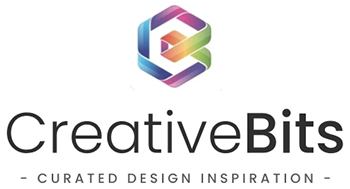Are you working on a product packaging job? Here’s a way to combine digital product photography and Adobe Photoshop CS2 to create quick virtual prototypes. The process is fairly easy once you understand the technique, and can be used for some pretty remarkable results.
Step 1: Photograph your product, then add a reference grid.

In our example, we took two pictures of our blue medicine bottle. The first photo is the product photo we’ll wrap our label around. The second photo includes a cut-out grid that will be used as a visual reference.
We created the grid in Adobe Illustrator, printed it on a laser printer and trimmed it down. Be careful not to change the angle or position of the camera or bottle between these two photos.
Step 2: Place the Illustrator grid file as a Smart Object, and Warp.

Here’s the magic. In the first step we photographed a reference image with our placed grid pattern. Now we open that image in Photoshop — and place the original Illustrator grid as a new layer.
You’ll need to group that placed grid into a new Smart Object before you’ll be able to apply the warp command (Layer > Smart Objects > Group into New Smart Object).
Now your grid is ready to be warped into position (Edit > Transform > Warp). Work with Photoshop CS2’s warp tool until you’ve matched the reference photo exactly.
Finally, replace the underlying bottle image with your original product photo — make sure to line it up exactly. We now have a Smart Object that has been carefully warped to the precise shape of our product.
Step 3: Place your label artwork into the warped Smart Object.

We are almost done!
Double-click on the warped grid in the layers palette. A separate window opens showing the contents of that Smart Object. Place your label artwork into this document.
In our example we placed a label we designed in Illustrator. This artwork comes in as an additional layer in our Smart Object. If we closed that Smart Object window, our logo will be warped onto the bottle with the grid still visible beneath it. However since we don’t really need the grid anymore it is probably easiest to turn off that layer before we close up our window.
Voilà! Add a touch of shadows and highlights and we have a pretty decent prototype of our new label design to show our client. Plus, because this technique is built with a Smart Object, we can continue to open and refine our label design as often as we like.
Want to see a QuickTime tutorial of this technique in action: Photoshop Virtual Prototype Tutorial.
Source: This tip inspired by a technique in Russell Brown’s Photoshop CS2 Tips & Techniques. Doctor Brown is an incomparable Photoshop showman. If you have an opportunity to catch his live show, do so.
Email: eval(unescape(‘%64%6f%63%75%6d%65%6e%74%2e%77%72%69%74%65%28%27%3c%61%20%68%72%65%66%3d%22%6d%61%69%6c%74%6f%3a%68%65%6c%70%40%63%72%65%61%74%69%76%65%74%65%63%68%73%2e%63%6f%6d%22%3e%68%65%6c%70%40%63%72%65%61%74%69%76%65%74%65%63%68%73%2e%63%6f%6d%3c%2f%61%3e%27%29%3b’))
Web: www.creativetechs.com
Tagline: Left-brain support for Right-brain Pros.
